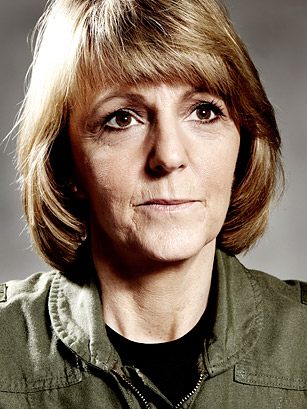
Darting around a windowless command center in southwestern Germany, Maggie Woodward flashed orders to pilots and skippers from the Great Plains to the Dolomites. She scrambled U.S. warplanes from Italy’s Aviano air base and ordered them to attack targets deep inside Libya. She dispatched secret orders to Marine amphibious ships in the Mediterranean, instructing their chopper crews when and where to stage for pilot search and rescue. She ordered electronic-countermeasures aircraft to broadcast radio messages encouraging Muammar Gaddafi’s troops to mutiny. She sent B-2 bombers from their base in Missouri to destroy Libyan aircraft on the ground near Misratah. A week later she dialed up a pair of B-1 bombers from South Dakota — which overcame a thick blanket of new snow, glare ice and freezing fog — to attack nearly 100 targets scattered across the North African desert. It was the first time the Reagan-era B-1s had ever struck overseas targets from their U.S. base. Operation Odyssey Dawn also marked the first time in U.S. history that a woman commanded a military air campaign. Fueled by Cokes and chocolate and backed by a staff of 400, Woodward raced Gaddafi’s tanks to the rebel stronghold of Benghazi and, over the course of a frenzied 12 hours, halted their advance. “I remember being worried as we watched the Libyan regime forces bear down on Benghazi,” she recalled in an April 4 conversation. “I remember all of us being terrified that we wouldn’t be able to turn them back in time and that they would overrun the city, and we just couldn’t even imagine the massacre that would ensue.” Jubilation erupted, she added, as “we watched our F-15Es take out those tanks.” Woodward’s account is a reminder that the recent U.S. operation in Libya was a much more complicated affair than just a no-fly zone. It was more like a don’t-move zone. Woodward ordered more than 2,100 sorties and 200 cruise-missile strikes, pinpointing any Libyan radar, missiles or command posts that could threaten allied planes, as well as military units threatening civilians. Very few of those attacks helped clear the skies; they cleared the streets of Gaddafi’s goons. Within two weeks, 25% of Gaddafi’s military had been reduced to rubble. “Our mandate included protecting the civilian population in Libya,” she said, “so we did much more than just the no-fly zone.” But now that the U.S. has stepped back from day-to-day control and NATO has taken responsibility for patrolling Libyan airspace, a kind of stalemate has set in. Gaddafi’s forces changed tactics and no longer travel in tank columns; they move around in civilian pickups. Even if allied air power wanted to take them out, distinguishing one side from the other has become much more difficult. Rebel officials said NATO air strikes killed 13 of their comrades over the April 2 weekend. Meanwhile, Gaddafi still has roughly 20,000 trained troops, but the rebels can only muster perhaps 1,000 on a good day. With Gaddafi and his supporters holed up in Tripoli and the rebels based in Benghazi, there’s a good chance each side could end up controlling half the country indefinitely. A Fast Burner”We’re not going to get into the first-woman thing, are we?” Woodward says, with more than a hint of exasperation. When asked if she feels like a role model for girls, the 51-year-old aerospace engineer and mountain-bike enthusiast replies, “I hope I’m an inspiring figure to lots of little boys and girls.” And big ones as well. Woodward spent the first 10 years of her life in Pakistan and India, where her late father worked for the U.S. Agency for International Development.